Protection of migrants against sexual and gender-based violence
Preventing and responding to sexual and gender-based violence is directly linked to the protection of human rights. Every individual, regardless of race, color, sex, language, religion, political orientation, national or social origin, property, social status, etc. is entitled to respect, protection, exercise of fundamental human rights and freedoms. Acts of sexual and gender-based violence restrict a range of fundamental human rights.
- The right to physical and mental health;
- The right to freedom from torture or inhuman or degrading treatment;
- The right to freedom of movement, opinion, expression and association;
- The right to enter into a marriage on the basis of free and full consent and to enjoy equal rights with one’s partner, both during marriage and at its dissolution;
- The right to education, social security and personal development;
- The right to cultural, political and public participation, equal access to services, employment and equal remuneration for work.
In this regard, there are several significant international instruments addressing sexual and gender-based violence:
- Convention on the Elimination of All Forms of Discrimination against Women – United Nations General Assembly, 1981;
- United Nations Declaration on the Elimination of Violence against Women – United Nations General Assembly, 1993;
- Beijing Declaration and Platform for Action, 1995;
- Rome Statute of the International Criminal Court, 1998;
- United Nations Security Council Resolution 1325, 2000;
Causes of sexual and gender-based violence
Understanding the causality of the occurrence of sexual and gender-based violence is a source for developing action plans to prevent it. The causes of sexual and gender-based violence are to be found in society’s attitudes and practices of gender discrimination, which place women in a subordinate position to men. The lack of social and economic valuing of women and their work and the acceptance of gender-specific roles perpetuates and reinforces the presumption that men have decision-making power and control over women. Through acts of sexual and gender-based violence, committed at individual or group level, persecutors tend to maintain their privilege, power and control over others. Gender identity and gender roles are determined by sex, age, socio-economic status, ethnicity, nationality and religion. Relationships between women and men, among women as well as men, are marked by different levels of authority and power that maintain privilege and subordination among members of a society. Disagreement or lack of responsiveness to human rights, gender equality, democracy and non-violent means of conflict resolution contribute to the perpetuation of these inequalities.
A person can become a victim or even an aggressor in the context of the existence/appearance the following types of risks:
- Risks at individual level – lack of security, addiction, physical and mental disabilities, lack of alternatives in adapting to socio-economic changes of status, alcohol abuse, drug abuse, psychological trauma and stress of conflict, refuge, internal displacement, ignorance, lack of knowledge of basic individual rights as stipulated by national and international bodies;
- Risks to social and cultural norms – discriminatory cultural and traditional beliefs and practices, religious beliefs;
- Legal framework and practices in the host country and/or country of origin – lack of protection of women’s and children’s rights against sexual and gender-based violence, lack of trust in state authorities, application of traditional laws and practices favoring discrimination, lack of interest in the subject, discriminatory practices in the administration of justice, non-reporting of incidents of sexual and gender-based violence and lack of trust in the administration of justice, lack of interest in prosecuting all reported cases of sexual and gender-based violence, low number of convictions obtained in proportion to the number of reports of sexual and gender-based violence, inaccessibility of police and courts due to the location of refugee camps, absence of women in the judiciary, lack of administrative resources and equipment of local courts and security forces, laws or practices in the administration of justice that support gender bias;
- War and armed conflict – destruction of social structures, exercise of political power and control over communities, ethical differences, socio-economic discrimination;
- Refugee situations, return and internal displacement – collapse of family and social support structures, high crime locations, overcrowded camps, shelters and communal households, service mix, facilities and access to them, male-dominated leaders in communities, lack of food, fuel, income and the possibility of payment for work done, lack of protection from police forces, lack of NGO representatives in refugee camps, lack of identity documents and non-registration of individuals, hostile local populations – refugees seen as materially privileged.
Victims/survivors of sexual and gender-based violence are at high risk of severe health and psycho-social disorders. The potential for long-term psycho-emotional trauma should not be underestimated.
Understanding the potential consequences of sexual and gender-based violence will help stakeholders to develop appropriate strategies for responding to these effects and to prevent conditions from worsening or worsening



